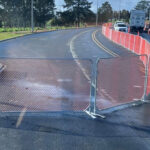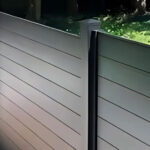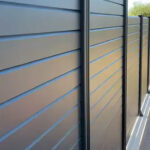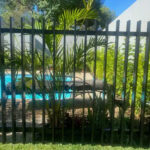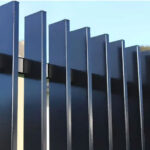Cattle Panel Fencing: The Ultimate Guide to Durable and Versatile Livestock Containment
Are you looking for a reliable, versatile, and cost-effective fencing solution for your farm or ranch? Look no further than cattle panel fencing. This comprehensive guide will walk you through everything you need to know about cattle panels, from their specifications and uses to installation tips and maintenance. Whether you’re a seasoned rancher or a hobby farmer, this article will help you make an informed decision about your fencing needs.
What Are Cattle Panels and Why Are They Popular?
Cattle panels, also known as livestock panels or wire cattle panels, are sturdy fencing components designed to contain and manage various types of farm animals. These panels are typically made of welded wire and come in standard sizes, making them a versatile choice for farmers and ranchers.Key features of cattle panels include:
- Durability: Made from galvanized steel wire, these panels are built to withstand the rigors of farm life.
- Versatility: They can be used for multiple purposes, from permanent fencing to temporary pens.
- Easy installation: Their lightweight nature makes them relatively easy to maneuver and install.
- Low maintenance: The galvanized coating provides rust resistance, reducing the need for frequent repairs.
What Are the Standard Specifications of Cattle Panels?
When shopping for cattle panels, it’s essential to understand their specifications to ensure you’re getting the right product for your needs. Here are the typical specifications you’ll encounter:
- Taille: Most cattle panels are 16 feet long and come in various heights, commonly 50 inches or 52 inches tall.
- Wire gauge: The wire used in cattle panels is usually 4-gauge, providing a good balance between strength and weight.
- Grid pattern: The most common pattern is 6″ x 8″, which is suitable for containing larger livestock like cattle and horses.
- Matériel: Panels are typically made of hot-dip galvanized steel for durability and rust resistance.
How Do Cattle Panels Compare to Other Fencing Options?
Cattle panels offer several advantages over traditional fencing methods:
- Flexibilité: Unlike fixed fences, cattle panels can be easily moved and reconfigured as needed.
- Durabilité: The welded wire construction and galvanized coating make them more durable than many wooden fences.
- Rentabilité: While the initial investment might be higher than some options, the longevity and low maintenance of cattle panels often make them more economical in the long run.
- Versatilité: They can be used for various purposes beyond just containing cattle, such as creating garden enclosures or temporary animal shelters.
For more information on different fencing options, check out our guide to metal fence types.
What Are the Different Types of Cattle Panels Available?
There are several types of cattle panels designed for specific purposes:
- Standard cattle panels: The most common type, suitable for general livestock containment.
- Hog panels: Feature a tighter wire spacing at the bottom to contain smaller animals.
- Combo panels: Combine features of both cattle and hog panels for versatile use.
- Walk-thru panels: Include a built-in gate for easy access.
- Rough stock panels: Extra sturdy for containing more aggressive animals.
How Can Cattle Panels Be Used Beyond Livestock Containment?
While primarily designed for livestock, cattle panels have numerous creative applications:
- Garden trellises: Their sturdy construction makes them excellent supports for climbing plants.
- Temporary animal shelters: Bent into an arch, they can form the frame for a quick shelter.
- Outdoor decor: With some creativity, they can be used for rustic decorative elements.
- Compost bins: Their open structure provides good airflow for compost piles.
For more innovative fencing ideas, explore our article on creative fence designs.
What Are the Best Practices for Installing Cattle Panels?
Proper installation is crucial for the effectiveness and longevity of your cattle panel fence. Here are some key tips:
- Planifiez votre mise en page: Measure your area and plan the panel placement before starting.
- Set sturdy posts: Use metal or treated wood posts at least 8 feet apart.
- Secure the panels: Attach panels to posts using strong wire or specialized clips.
- Consider terrain: Adjust panel placement to account for uneven ground.
- Add gates: Incorporate walk-thru panels or separate gates for easy access.
How Do You Maintain Cattle Panel Fencing?
While cattle panels are relatively low-maintenance, some upkeep is necessary:
- Inspections régulières: Check for any damage or loose connections periodically.
- Nettoyage: Remove any debris that might accumulate on the panels.
- Rust prevention: Touch up any scratches in the galvanized coating to prevent rust.
- Tightening: Re-secure any loose panels or connections as needed.
For more detailed maintenance tips, refer to our fence maintenance guide.
What Are the Costs Associated with Cattle Panel Fencing?
The cost of cattle panel fencing can vary based on several factors:
- Panel type: Standard panels are typically less expensive than specialized ones.
- Quantity: Bulk purchases often come with discounts.
- Additional materials: Factor in the cost of posts, gates, and installation hardware.
- Travail: If not installing yourself, consider professional installation costs.
While the initial investment might seem high, the durability and low maintenance of cattle panels often make them a cost-effective choice in the long run.
Are There Any Drawbacks to Using Cattle Panels?
While cattle panels offer many benefits, it’s important to consider potential drawbacks:
- Limited height: Standard panels may not be tall enough for some large animals.
- Spacing issues: The wire spacing may allow smaller animals to escape.
- Visual appeal: Some may find the industrial look less attractive than traditional fencing.
- Shipping costs: Due to their size, shipping can be expensive for long-distance orders.
How Do You Choose the Right Cattle Panels for Your Needs?
Selecting the appropriate cattle panels depends on several factors:
- Type of livestock: Different animals require different panel types and heights.
- But: Permanent fencing needs may differ from temporary enclosure requirements.
- Climat: Consider how well the panels will withstand your local weather conditions.
- Budget: Balance cost with quality and durability for the best long-term value.
- Esthétique: If appearance is important, consider how the panels will fit with your property’s look.
For expert advice on choosing the right fencing for your property, consult our fence selection guide.
Principaux points à retenir
- Cattle panels are versatile, durable, and cost-effective fencing solutions for farms and ranches.
- They come in various types and sizes to suit different livestock and purposes.
- Proper installation and maintenance are crucial for longevity and effectiveness.
- While primarily used for livestock containment, cattle panels have numerous creative applications.
- Consider factors like livestock type, purpose, climate, and budget when choosing cattle panels.
- Despite some limitations, the benefits of cattle panels often outweigh the drawbacks for many property owners.
By understanding the ins and outs of cattle panel fencing, you can make an informed decision about whether this versatile solution is right for your property. Whether you’re managing a large herd or just need a flexible fencing option for your hobby farm, cattle panels offer a reliable and adaptable choice for your fencing needs.




